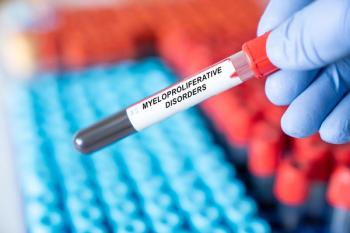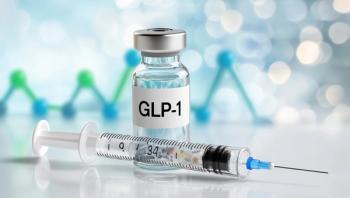
- June 2015
- Volume 21
- Issue SP8
Cardio-Oncology: The Intersection Between Cancer and Cardiovascular Disease
With the prognosis for many cancers improving, we are seeing an appropriate sharpening of focus on the cardiovascular risks of patients who have survived cancer or are being treated for cancer, as well as a growing recognition of the impact this competing morbidity has on both short- and long-term health outcomes.
Cardio-oncology, or onco-cardiology, is the discipline that focuses on the intersection of cardiovascular disease and cancer. With the prognosis for many cancers improving, we are seeing an appropriate sharpening of focus on the cardiovascular risks of patients who have survived cancer or are being treated for cancer, as well as a growing recognition of the impact this competing morbidity has on both short- and long-term health outcomes.
Seminal studies demonstrated the increased risk of left ventricular (LV) dysfunction or cardiomyopathy in survivors of childhood cancer who had been treated with anthracyclines and chest radiation.1,2 Similarly, there are increased risks of congestive heart failure in adults treated with anthracycline-based chemotherapy regimens, which in current practice includes patients with breast cancer, leukemia, lymphoma, sarcoma, and other cancer types.
Along with the traditional approaches of chemotherapy, a revolution in the understanding of the molecular mechanisms that underlie many common cancers has led to the development of targeted pathway inhibitors, many of which inhibit tyrosine kinases. The number of these targeted therapies has increased exponentially in the last decade, with many more in clinical trials. Ideally, these drugs would target only cancer cells, but the potential for cardiovascular effects exists due to the presence of identical molecular pathways in cardiovascular cells.3 The potential cardiotoxicities include hypertension, cardiomyopathy, QT prolongation, arrhythmias, thrombosis, and metabolic abnormalities. It is important to note that the cardiovascular profile is different for each drug.
For many cancers, including breast cancer and lymphoma, chest radiation remains an important component of the treatment regimen. The cardiovascular risks of radiotherapy include coronary artery disease, valvular heart disease, pericardial disease, conduction system abnormalities, and myocardial fibrosis.4 A recent analysis by Darby et al suggested a linear increase in the incidence of ischemic heart disease with higher estimated radiation doses to the heart.5 The development and validation of approaches to minimize this long-term risk is the focus of ongoing research.
Prompt recognition and management of cardiotoxicity during chemotherapy is critical in order to ensure that patients can continue to receive these important treatments. There are data suggesting that early recognition of chemotherapy-induced cardiomyopathy and prompt initiation of medical therapy can promote recovery of cardiac function.6 Trials are being conducted to validate this approach and define the appropriate method of screening for cardiotoxicity, including the use of cardiac imaging and biomarkers. The development of cardiotoxicity may also increase the risk of morbidity and mortality, as evidenced in an analysis of Medicare patients undergoing treatment for breast cancer.7 The interplay and balance between the competing morbidity and mortality of cardiovascular disease and cancer is particularly important in an older population, whose risks are inherently higher.
MGH Cardio-Oncology Program
The MGH Cardio-Oncology Program introduced in 2011 is a joint initiative between the Heart and Cancer Centers at Massachusetts General Hospital that provides comprehensive cardiovascular care to cancer patients, with the goal of improving short- and long-term outcomes (Figure).
Risk Assessment Prior to Cancer Treatment
For many patients, determining if there are cardiovascular risks that need to be addressed before they undergo medical or surgical treatments for cancer is necessary in order to ensure optimal outcomes. Working closely with the cancer care team, we provide a comprehensive cardiovascular evaluation and treatment plan prior to cancer therapy to minimize cardiovascular complications. When appropriate, this evaluation may include diagnostic testing and medical therapy.
Care for Cancer Patients with Existing Cardiovascular Disease
Management of preexisting conditions such as hypertension, coronary artery disease, congestive heart failure, heart valve disease, and arrhythmias in cancer patients requires an approach customized to their overall care. Our goal is to manage existing cardiac conditions so that patients get the best cancer care possible. Adjustment of antiplatelet and anticoagulation therapy may be necessary, depending on bleeding risks during chemotherapy. Additionally, drug-drug interactions may require adjustment of cardiovascular medications during chemotherapy.
Monitoring for Cardiac Complications From Cancer Therapy
Patients who are actively receiving chemotherapy or those who have previously completed chemotherapy and/or radiation therapy may be at an increased risk of coronary artery disease, congestive heart failure, valvular heart disease, pericardial disease, and arrhythmias. Recommendations from groups such as the Children’s Oncology Group,8 National Comprehensive Cancer Network,9 and a joint committee from the European Association of Cardiovascular Imaging/American Society of Echocardiography are helpful in addressing these concerns.10,11 There is a limited evidence base to guide many of these recommendations, and future trials will be necessary to validate the comparative effectiveness of these strategies. In the interim, it is important for clinicians and patients to understand the role of surveillance for subclinical cardiotoxicity.
Evaluation of Cardiac Tumors
Cardiac tumors are relatively rare and require specialized care. Our state-of-the-art imaging technology to evaluate cardiac tumors includes echocardiography (with 3D imaging), cardiac CT, cardiac MRI, and positron emission tomography (PET). We work closely with colleagues in oncology, radiation oncology, radiology, interventional cardiology, and cardiothoracic surgery to develop and implement a treatment plan for these complex cases.
Assessment of New Chemotherapies
There are many chemotherapeutic agents currently in clinical and preclinical studies that have the potential to damage the heart (cardiotoxicity). The use of diagnostic imaging, noninvasive stress testing, serum biomarkers, ambulatory blood pressure monitoring, and ambulatory cardiac telemetry (continuous monitoring of a patient’s heart from a remote location) can help identify cardiotoxicities and lead to the development of preventative strategies.
Developing a Program
Cardio-oncology is a multidisciplinary specialty and requires close collaboration among cardiologists, oncologists, primary care physicians, radiation oncologists, surgeons, and a variety of other specialists involved in the care of cancer patients. An increasing number of national and international programs have developed within the last several years to address this growing clinical need.
In addition to close collaborations with our colleagues across many disciplines, we have implemented several clinical initiatives which have been successful. We created a dedicated cardio-oncology clinic geographically localized within the cancer center. The close proximity with our colleagues in oncology has fostered a greater spirit of collaboration, and embedding our program within the cancer center also exemplified our patient-centered approach. The result of this initiative has been improved patient access and a significant reduction in the time for appointments. Timely consultations are critical for many patients, especially when decisions regarding chemotherapy are needed or in cases where cardiotoxicity is a concern.
A second clinical initiative we have successfully implemented is the use of a limited echocardiogram protocol for patients who require routine surveillance of LV ejection fraction while on chemotherapy or after completing chemotherapy. Compared with a comprehensive echocardiogram, this shorter and more focused protocol has improved efficiency in the echo lab and improved patient satisfaction at a reduced cost.
Research Focus
Our group has long been interested in the role of advanced cardiac imaging techniques, including strain imaging by echocardiography, cardiac MRI, and biomarkers in the detection of LV dysfunction in patients receiving chemotherapy.12-14 Members of our group are also pursuing studies on the molecular mechanisms of anthracycline cardiotoxicity using a novel high-throughput zebrafish model.15 Collectively, this work could yield better approaches to diagnosis and mitigate the risk of cardiotoxicity.
The Future
EBO
Ongoing clinical trials will address gaps in our knowledge base, with the goal of improving the cardiovascular health outcomes of patients with cancer. Dedicated training experiences in cardio-oncology and educational sessions at national and international meetings (ie, American Heart Association, American College of Cardiology, American Society of Clinical Oncology, European Society of Cardiology, and International CardiOncology Society) will lead to a greater adoption of best practices. Finally, comparative effectiveness studies will guide healthcare policy and influence implementation of clinical cardio-oncology protocols.
Sanjeev A. Francis, MD, is director of the Cardio-Oncology Program at Massachusetts General Hospital, and instructor in medicine at Harvard Medical School, Boston, MA.
Marielle Scherrer-Crosbie MD, PhD, is co-director of the Cardio-Oncology Program at Massachusetts General Hospital and associate professor of medicine at Harvard Medical School, Boston, MA.
Other members of the Cardio-Oncology Program at Massachusetts General Hospital include:
Tomas G. Neilan, MD, assistant professor of medicine, Harvard Medical School, co-director, Cardiac MR PET CT Program, Massachusetts General Hospital. Aarti Asnani, MD, will be joining the Program in July as an instructor in medicine.
1. Lipshultz SE, Colan SD, Gelber RD, Perez-Atayde AR, Sallan SE, Sanders SP. Late cardiac effects of doxorubicin therapy for acute lymphoblastic leukemia in childhood. N Engl J Med. 1991;324(12):808-815.
2. Steinherz LJ, Steinherz PG, Tan CTC, Heller G, Murphy ML. Cardiac toxicity 4 to 20 years after completing anthracycline therapy. JAMA. 1991;266(12):1672-1677.
3. Cheng H, Force T. Molecular mechanisms of cardiovascular toxicity of targeted cancer therapeutics. Circ Res. 2010;106(1):21-34.
4. Groarke JD, Nguyen PL, Nohria A, Ferrari R, Cheng S, Moslehi J. Cardiovascular complications of radiation therapy for thoracic malignancies: the role for non-invasive imaging for detection of cardiovascular disease. Eur Heart J. 2014;35(10):612-623.
5. Darby SC, Ewertz M, McGale P, et al. Risk of ischemic heart disease in women after radiotherapy for breast cancer. N Engl J Med. 2013;368(11):987-998.
6. Cardinale D, Colombo A, Lamantia G, et al. Anthracycline-induced cardiomyopathy: clinical relevance and response to pharmacologic therapy. J Am Coll Cardio. 2010;55(3):213-220.
7. Wang SY, Long JB, Hurria A, et al. Cardiovascular events, early discontinuation of trastuzumab, and their impact on survival. Breast Cancer Res Treat. 2014;146(2):411-419.
8. Long-term follow-up guidelines for survivors of childhood, adolescent, and young adult cancers. Children’s Oncology Group website. http://www.survivorshipguidelines.org/. Accessed May 5, 2015.
9. Patient and caregiver resources: cardiotoxicity. National Comprehensive Cancer Network website. http://www.nccn.org/patients/resources/life_with_cancer/managing_symptoms/cardiac_toxicity.aspx. Accessed May 5, 2015.
10. Lancellotti P, Nkomo VT, Badano LP, et al. Expert consensus for multi-modality imaging evaluation of cardiovascular complications of radiotherapy in adults: a report from the European Association of Cardiovascular Imaging and the American Society of Echocardiography. J Am Soc Echocardiogr. 2013;26(9):1013-1032.
11. Plana JC, Galderisi M, Barac A, et al. Expert consensus for multimodality imaging evaluation of adult patients during and after cancer therapy: a report from the American Society of Echocardiography and the European Association of Cardiovascular Imaging. J Am Soc Echocardiogr. 2014;27(9):911-939.
12. Sawaya H, Sebag IA, Plana JC, et al. Assessment of echocardiography and biomarkers for the extended prediction of cardiotoxicity in patients treated with anthracyclines, taxanes, and trastuzumab. Circ Cardiovasc Imaging. 2012;5(5):596-603.
13. Ky B, Putt M, Sawaya H, et al. Early increases in multiple biomarkers predict subsequent cardiotoxicity in patients with breast cancer treated with doxorubicin, taxanes, and trastuzumab. J Am Coll Cardiol. 2014;63(8):809-816.
14. Neilan TG, Coelho-Filho OR MD, MPH, MD RVS, et al. Myocardial extracellular volume by cardiac magnetic resonance imaging in patients treated with anthracycline-based chemotherapy. Am J Cardiol. 2013;111(5):717-722.
15. Liu Y, Asnani A, Zou L, et al. Visnagin protects against doxorubicin-induced cardiomyopathy through modulation of mitochondrial malate dehydrogenase. Sci Transl Med. 2014;6(266):266ra170.
Articles in this issue
over 10 years ago
Drop-off in Prostate Screening Stirs Controversyover 10 years ago
IMS Health Report Estimates $100-Billion Global Cancer Spend in 2014over 10 years ago
Nivolumab Assigned Priority Review for First-Line in Melanomaover 10 years ago
Cardio-Oncology: A Sign of How Far We Have Comeover 10 years ago
Zarxio Yet to See Light of Day in US Marketover 10 years ago
Session on Cardio-oncology Reflects Growing Number of Survivorsover 10 years ago
20 Years of Creating and Embracing Guidelines in Cancer Careover 10 years ago
Defining Value in Cancer Care TreatmentNewsletter
Stay ahead of policy, cost, and value—subscribe to AJMC for expert insights at the intersection of clinical care and health economics.














































